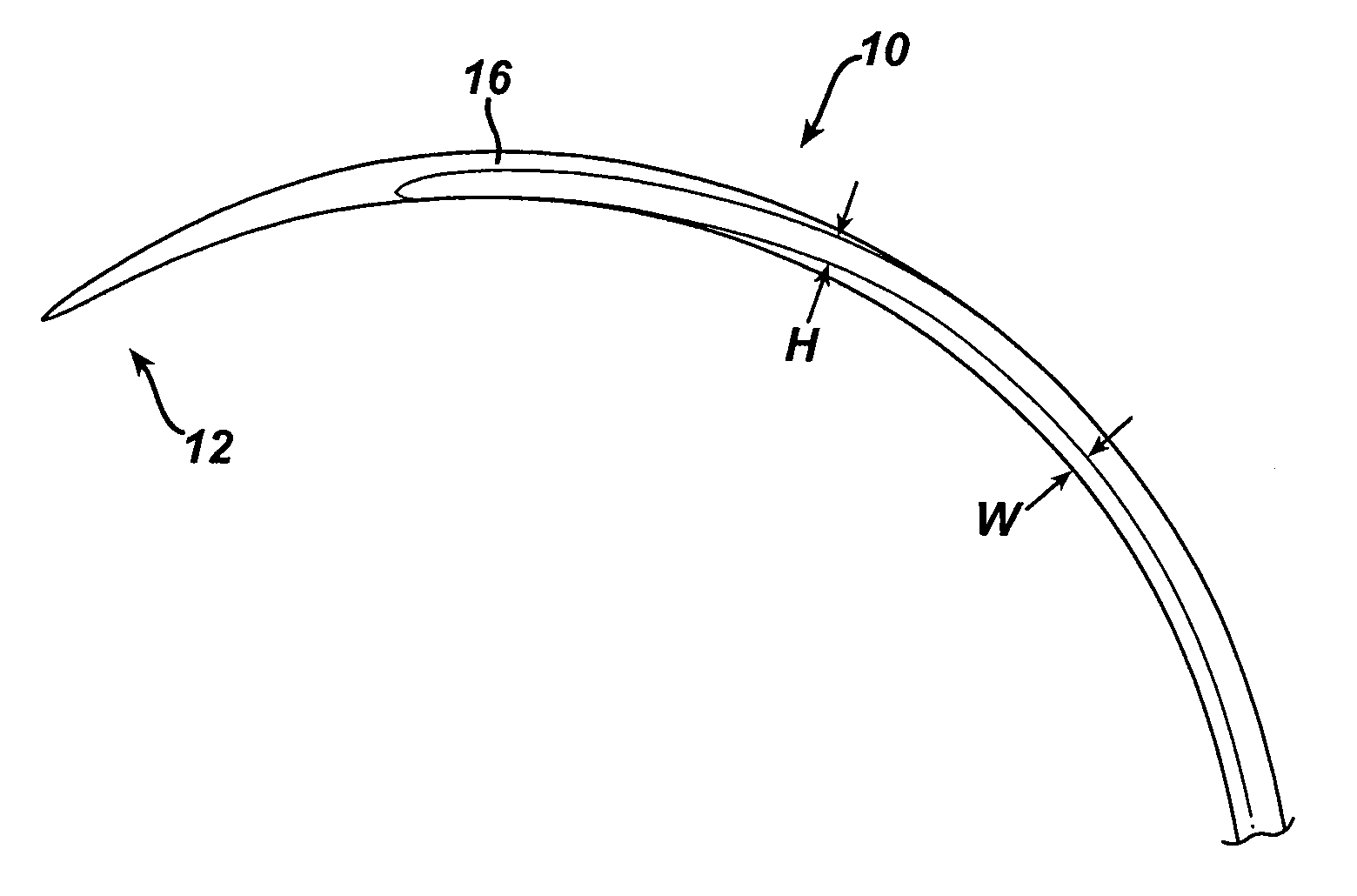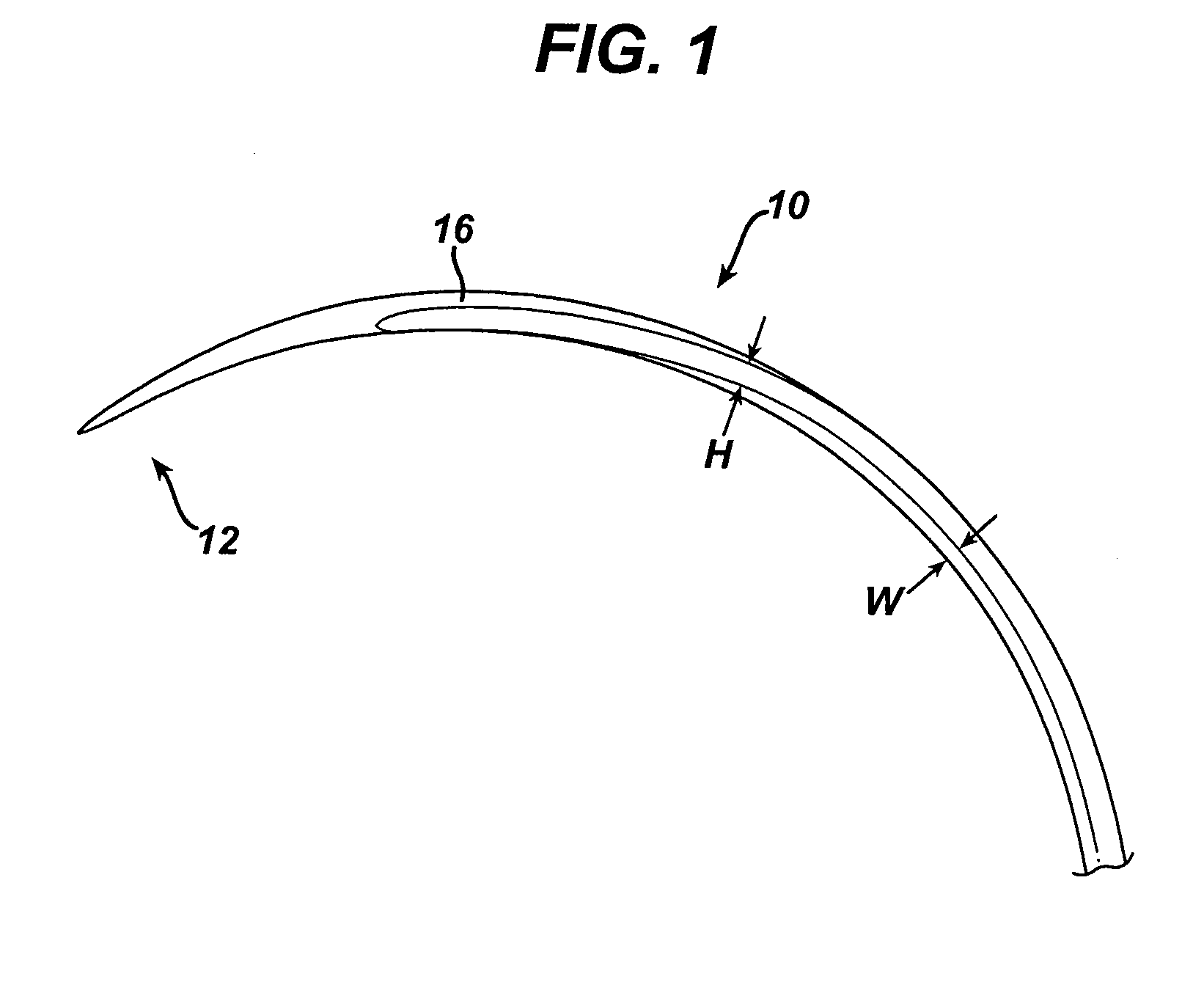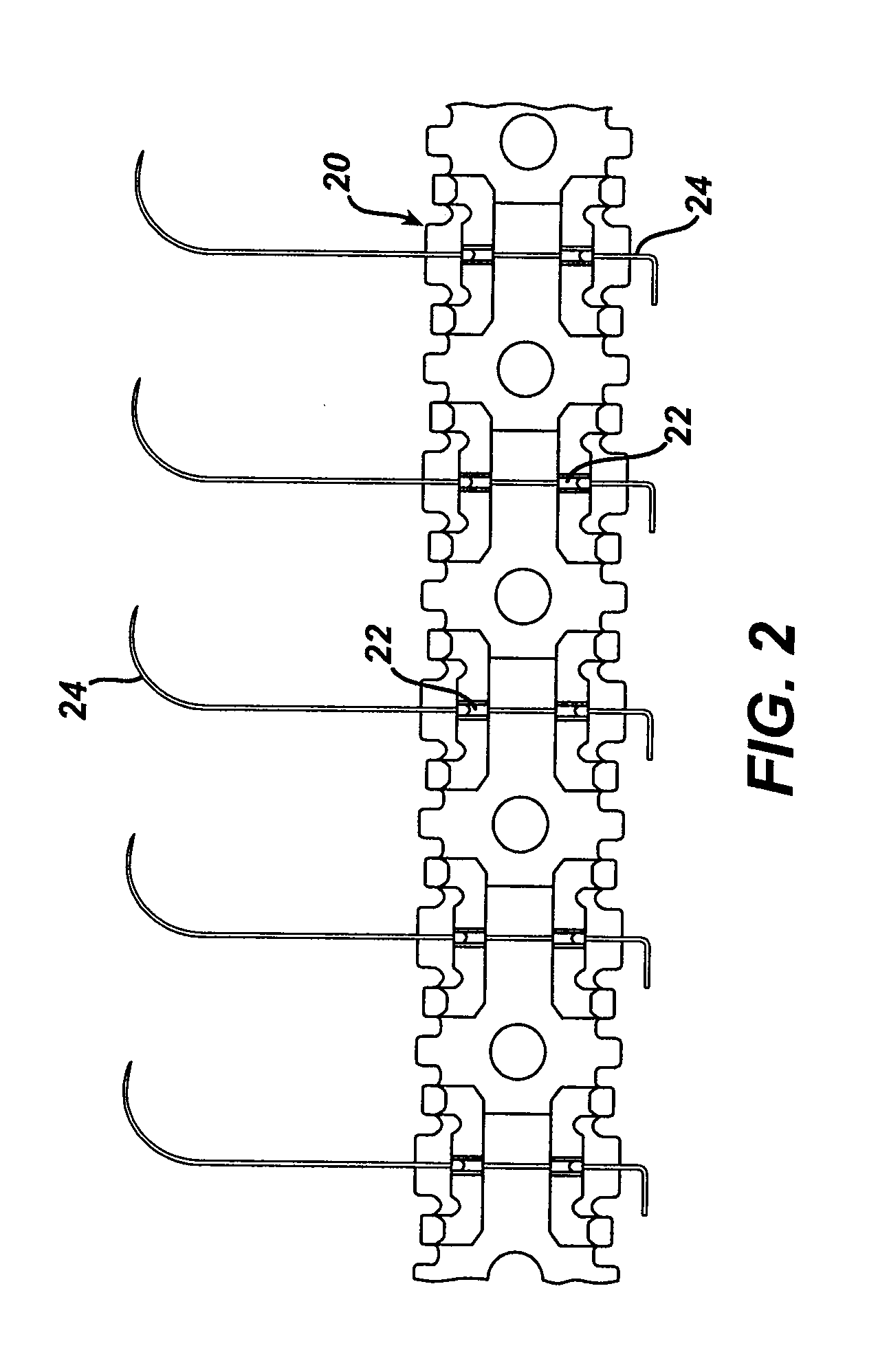Surgical Needle Coatings and Methods
a technology of coatings and needles, applied in the field of coating medical devices, can solve the problems of not being considered lubricious, coatings that do not adhere well to the desired substrate, and wear off the substrate during use, and achieve the effect of enhancing the durability of the top coating
- Summary
- Abstract
- Description
- Claims
- Application Information
AI Technical Summary
Benefits of technology
Problems solved by technology
Method used
Image
Examples
example 1
[0073]The following tests were performed to examine the effect coating methods have on the force required to pass a needle through Monmouth rubber synthetic media. The performance of needles that were dip coated was compared with the performance of needles that were spray / swirl coated.
[0074]Test A
[0075]In Test A, five needles were prepared for penetration testing. The needles were made from ETHALLOY® Alloy stainless steel and had a diameter of 0.0105 inches. A base coating composition was prepared from a mixture of 20 wt. % of Micropro 600 and Micromatte 2000, produced by Micropowders Inc., mixed with 80 wt. % of HFE-72DE solvent. The MicroPro and Micromatte powder weight ratio was at 4:1. Five test needles were each dipped into the base coating to coat their surfaces. The needles were coated by hand via the dipping process and placed on a magnetic tray. The tray includes raised magnetic strips for holding the proximal ends of the needles secure during the curing cycle and transport...
example 2
[0083]The penetration performance of various coating compositions and coating methods were also tested. In the following Tests A and B, two different types of needle coating compositions and application methods were examined. The needles were passed through Monmouth rubber synthetic media.
[0084]Test A
[0085]In Test A, ten commercially available Ethicon BV-175 surgical needles having a 0.0078 inch diameter were tested. A coating was applied using a double dipping procedure. In particular, a silicone dip was prepared using a concentration of NuSil® Product No. MED4162 mixed with Micropro 600 and Micromatte 2000 powders for lubrication as described above. The needles were placed on a moving carrier strip and dipped a first time. The needles were then flash cured in a hot box at approximately 225 degrees Celsius for thirty seconds. The needles were then cured for 36 hours in a convection oven at 163 degrees Celsius. The needles were dipped a second time, flash cured, and then cured in a ...
example 3
[0093]The following tests were performed to examine the effect coating methods have on the force required to pass a needle through Monmouth rubber synthetic media. The performance of needles that were dip coated was compared with the performance of needles that were spray / swirl coated.
[0094]Test A
[0095]In Test A, four 0.026 inch diameter needles made from ETHALLOY® Alloy and having a taper cut point geometry were prepared for penetration testing. A base coating composition was prepared from a solution of 2.5 g of Momentive®, vinyl siloxane polymer, product no. MSC2631, 22.15 g of Exxon Isopar-K, 0.0022 g of Momentive®, catalyst in toluene, product no. SS8010, and 0.0127 of Momentive®, polymethyl hydrogen siloxane, product no. SS4300. Four test needles were each dipped into the base coating composition to coat their surfaces. The coated needles were then heated to 200 degrees Celsius in a convection oven furnace for one hour.
[0096]A top coat coating composition was prepared using 2.5...
PUM
| Property | Measurement | Unit |
|---|---|---|
| relative speed | aaaaa | aaaaa |
| relative speed | aaaaa | aaaaa |
| thickness | aaaaa | aaaaa |
Abstract
Description
Claims
Application Information
 Login to View More
Login to View More - R&D
- Intellectual Property
- Life Sciences
- Materials
- Tech Scout
- Unparalleled Data Quality
- Higher Quality Content
- 60% Fewer Hallucinations
Browse by: Latest US Patents, China's latest patents, Technical Efficacy Thesaurus, Application Domain, Technology Topic, Popular Technical Reports.
© 2025 PatSnap. All rights reserved.Legal|Privacy policy|Modern Slavery Act Transparency Statement|Sitemap|About US| Contact US: help@patsnap.com



